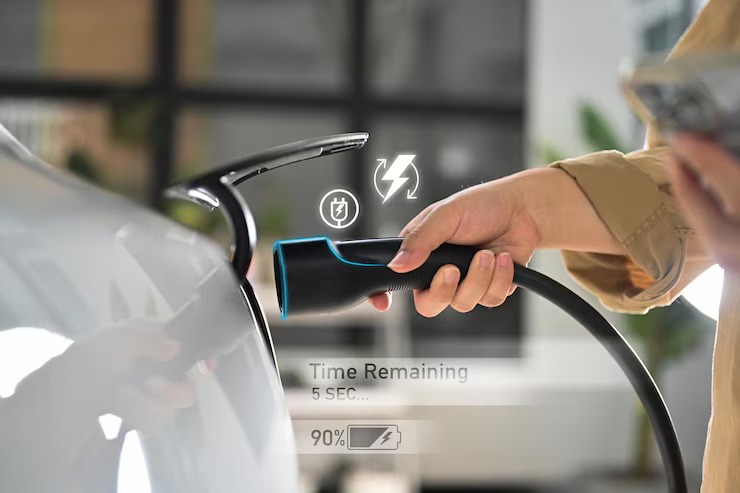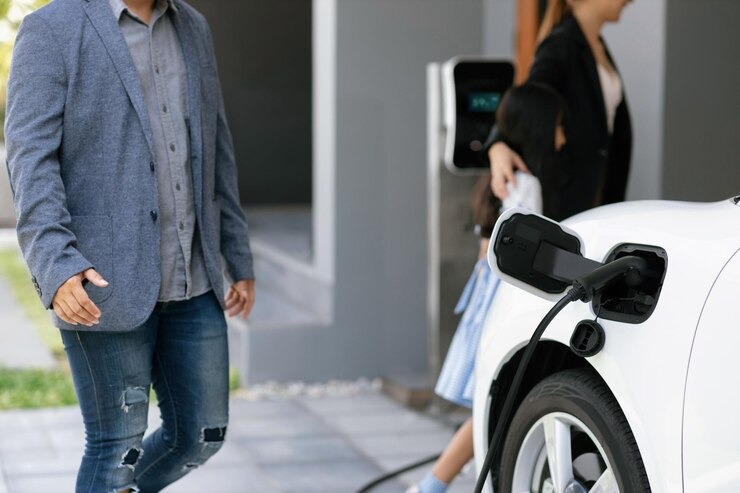Electric vehicles (EVs) have become an integral part of our everyday lives as their adoption rates continue to rise. And just like any other technology, understanding EV charging safety is equally important to ensure an enhanced experience for owners and other stakeholders.
EV charging safety rules encompass a variety of considerations, from selecting the right chargers to adhering to proper procedures while charging. It doesn’t matter if you’re charging at home or at a public station; understanding the risks and following best practices can prevent accidents and extend your EV’s life.

Here, we delve into the important safety aspects of EV charging, insights, and tips to help you charge your electric vehicle securely and with confidence.
Electric Vehicle Charging Risks
In the US, there are about 30,000 non-fatal electrical shock accidents reported every year, according to the National Institute of Health (NIH). Of course, EVs are built to a high safety standard, so it’s almost impossible to be predisposed to a safety hazard. But we cannot entirely dismiss the possibility of an accident occurring with improper handling. Here are some of the potential safety risks related to EV charging.
- Electrical Hazards
Level 3 DC Fast Chargers, like Charge Rigs’ Omega DC Fast Charger, draw enormously high current, therefore require robust wiring and breakers. If you skip the proper installation procedure, you risk overloading circuits or introducing short circuits. But with chargers like the FLEXX mobile unit, they offer built-in over-current and under-voltage protections. Still, it’s important to involve a licensed electrician, whether installing a public or home charger.
- Fire Risks
EVs look and feel safe, but still, you cannot entirely dismiss the potential of electric vehicle charging risks, such as fires. With frayed cables or faulty equipment, an electrical fire can happen anytime. How do you keep them at bay? By ensuring regular inspections are conducted. This can significantly lower the risk of fire and other potential hazards.
- Charging Station Malfunctions
Public DC fast chargers can glitch due to broken connectors or unresponsive screens. A study in the Greater Bay Area found 27% of CCS connectors failed during spot checks, underscoring the need for reliable hardware and quick maintenance.
- Cybersecurity Risks
We cannot deny the convenience of smart chargers; they let EV owners track available charging spots, monitor the speed and charging percentage, plus much more. But these pose a potential risk of exploitation. Research shows CCS stations can be jammed via “Brokenwire” attacks using simple radio tech from nearby.
- Battery Degradation
This is an indirect EV charging safety risk that can happen from continuously using DC fast chargers for longer. The rapid electric current rush can heat the battery, accelerating degradation. With a degraded battery, other potential safety hazards kick in, like leakages and fire eruptions. With a robust charging equipment offering dynamic load management, such as the FLEXX Mobile DC Fast Charger, you can eliminate or ease battery stress, keeping both the charger and the EV safe.
- Electric Shock
Any damaged plug or wet conditions can increase the risk of an electric shock. To reduce the risk of electrocution, you may opt for chargers with residual-current protection. And if it’s a public charger, ensure it has IP54-level weatherproofing, so that, come rain or shine, EV charging safety guidelines are met.
EV Charging Safety Requirements Guidelines
Ensuring that EV charging safety rules are adhered to is not just a checklist; they’re important guardrails for fleets, public lots, and homes. In this section, we explore the different guidelines that both EV owners and public charging stations must follow to ensure the highest level of safety for everyone.
Electrical Safety Requirements
During installation of chargers, circuit breakers, proper grounding, and GFCI/RCD protection must be included. The latter is just a device that protects users against residual current shock, and is standard with advanced chargers like FLEXX Mobile DC Fast Charger. These safety requirements suppress faults and prevent hazardous currents.
Installation Requirements
If you’re dealing with a Level 3 DC Fast Charger, then you’ll need a dedicated three-phase AC power and a licensed electrician to do the work. Some charging equipment providers offer an entire crew of electricians to handle the installation for you, ensuring both performance and peace of mind.
Use Certified Equipment
Using certified equipment is one step forward towards ensuring your EV charging safety. Go for UL-Listed, OCPP-compliant chargers for seamless integration and communication with data storage systems. This brings in convenience when it comes to monitoring and managing the charging infrastructure remotely. It also makes it easier to generate reports and spot issues before they escalate.
Proper installation
When it comes to installation, it’s not just about ensuring the chargers are connected to the source of power, like the grid or renewable sources. It’s also about safety, which is why it’s crucial to use certified installers. These experts follow local building codes (like NEC in the US) and recommend permits.
Ground Fault Protection
Every public charger must trip quickly upon detecting leakage. This is important in keeping EV owners and other users safe in case of a sudden current leak. Go for chargers with a residual current safety net, like the FLEXX DC Fast Charger.
Fire Safety Compliance
Maintain clearance zones and install bollards around fast chargers. Another good idea commonly used in gas stations is keeping a bucket of sand nearby just in case a fire breaks out. It might sound like overkill, but it’s a smart move.
Regular Maintenance
Regular maintenance, especially for DC fast chargers, is non-negotiable if you want to maintain the highest levels of EV charging safety. Have the cables, connectors, and charging equipment inspected periodically for wear to ensure potential hazards are identified before they happen.
Environmental Protection
For chargers installed out in the open, exposed to the sun, it’s important to keep environmental protection in mind. That is, go for chargers that are rated to operate in extreme temperatures, such as the Omega DC Fast Chargers that work in the range of -40°F – 140°F. This can also resist dust, humidity, and UV, allowing safe outdoor use, even in Florida sun or Minnesota snow.
Liability Insurance
Lastly, don’t rely on chance to keep your charging equipment protected from accidents. Cover the site and the chargers under general liability and equipment insurance. You can also combine this with your existing policies. It’s smart and legal, especially if you’re operating a fleet or public site.
How to Stay Safe While Charging Your EV at Home
Charging at home should be as easy as plugging in your phone to charge overnight, except you need to factor in safety more. Here are a few simple EV charging safety tips to elevate your experience.
- Stick to UL-listed, hardwired Level 2 chargers.
- Keep cables off the driveway and inspect them monthly for cracks or damage.
- Don’t charge during thunderstorms.
- Dry off connectors after rain. While most are IP54 waterproof, it’s better to err on caution.
- Follow your charger’s user manual. Always refer to the manual if unsure.

Final Thoughts
When it comes to EV charging safety, it’s crucial to follow the guidelines to the letter. This is not just a set of rules; it’s the foundation for building confidence with your EV and convenience. The right gear, proper setup, and a bit of awareness can make your charging the smoothest part of owning and operating an EV.
Planning to set up a public charging station that adheres to the highest safety standards? Charge Rigs’ Omega and FLEXX Mobile Fast DC Chargers are built to the tough US standards, allowing you to focus on what matters: safely driving toward a smarter, cleaner future.
FAQ
- Is It Safe to Leave an Electric Car Charging Overnight?
Yes, you can leave your EV charging overnight without the risk of causing damage or hazards. Modern EVs come with overcharging protection that stops charging when the battery is full. All you need to ensure is that your Level 2 charger is certified and has a properly installed outlet.
- What Are the Risks of Leaving Your EV Plugged In?
While it’s safe to leave EVs plugged in due to their overcharging protection, there might be a safety hazard if the wiring or the charger is not up to code. Regular inspections and adhering to EV charging safety rules can help minimize risks.
- Are EV Chargers Safe to Use in the Rain?
Yes, most chargers come with IP54 or higher waterproofing standards, making it safe to charge in the rain. But still, for the sake of electric vehicle charging safety, avoid handling cables when wet.
Is It Safe to Sit in My EV While Charging?
Yes, there’s no safety concern for sitting in your EV while it’s charging. The charging current doesn’t affect the cabin. Just ensure you don’t fiddle with connectors or open ports during the charging session.


